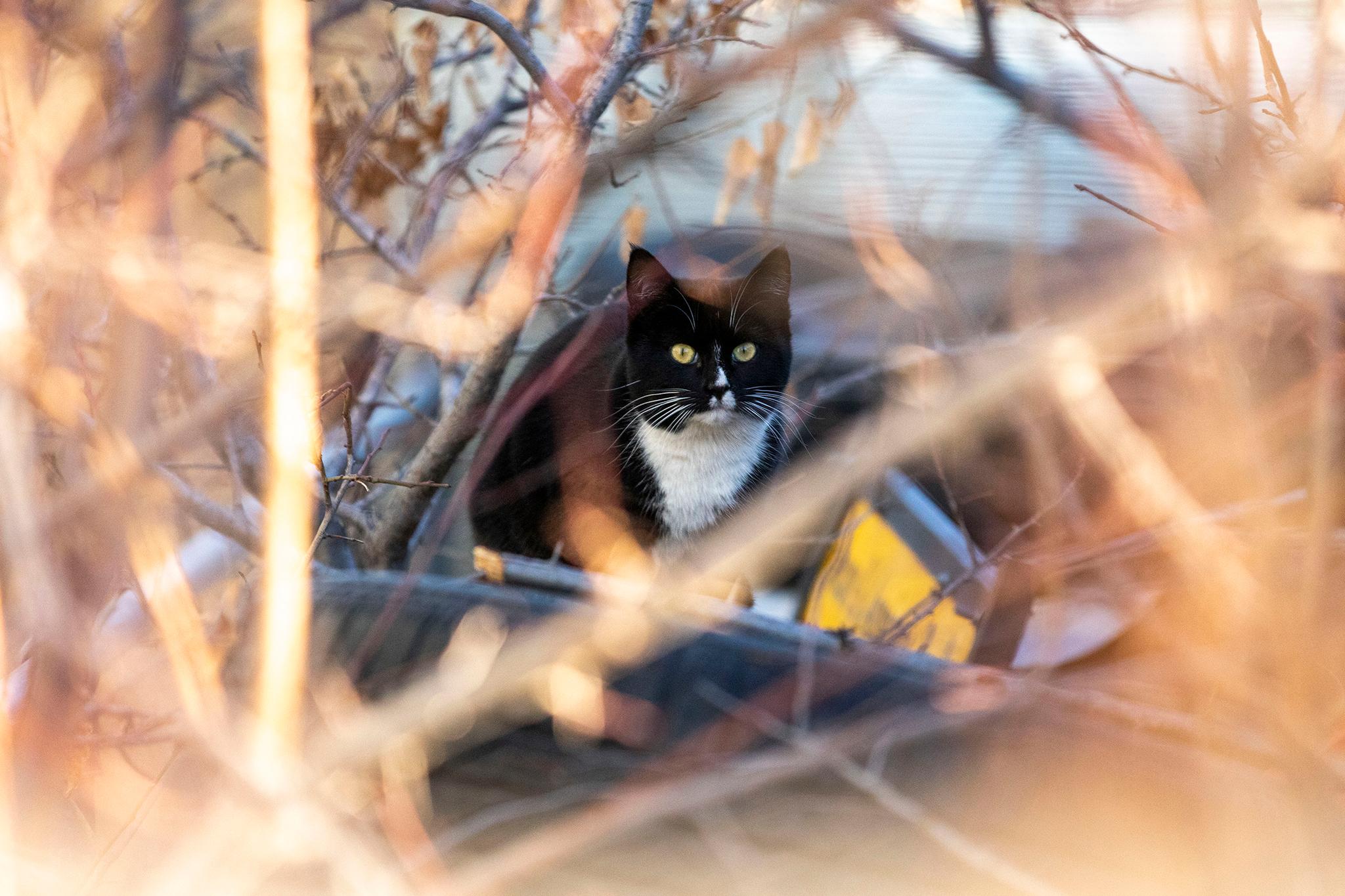
Colorado’s outbreak of H5 bird flu is now showing up in another animal species: cats.
Six feline cases of Influenza A (also known as HPAI, Highly Pathogenic Avian Flu H5N1) have been diagnosed in domestic cats in Colorado so far this year. That’s according to the Colorado Veterinary Medical Association’s website.
At least five of the cases were located in Northern Colorado, in Larimer, Adams and Morgan counties, according to a U.S. Department of Agriculture website tracking the virus in mammals.
The site also documents the broad reach of the virus into a wide variety of species.
Since 2022, the virus has been detected in the following Colorado mammals: deer mouse, house mouse, desert cottontail, prairie vole, raccoon, striped skunk, red fox, mountain lion, bobcat and black bear.
“It's just remarkable how fast and furious it's moving. So I hope we can get a handle on it soon,” said Kay Russo, a Colorado veterinarian with RSM Consulting who has worked with both dairy cows and poultry, which have been hard hit by the virus this year.
No known human cases of H5N1 have been linked to exposure to infected cats, according to the state health department.
The federal Centers for Disease Control and Prevention continues to state that the risk to the general public is low, according to a spokesperson for the state health department.
“People with direct contact to infected cats should be considered at the same risk as those in direct contact with other infected animals, such as cows or poultry,” she wrote in an email. “The risk of human infection from contact with cats is not well understood."
The five cases listed on the USDA website are all of the same strain, H5N1, which raises the level of concern, according to May Chu, an epidemiologist and clinical professor from the Colorado School of Public Health. She suggested more testing is needed, in particular, sequencing of the full genome of these strains to investigate the chain of transmission.
The details regarding H5 bird flu in domestic cats on the CVMA website said two of the six cases were “indoor-only cats with no direct exposures to the virus,” according to the post.
Three were “known indoor/outdoor cats” that hunted mice and/or small birds as prey and also spent time indoors with their owners.
“I think the link is potentially here with the house cats that don't go outside is we're seeing a lot of mice that are testing positive for H5N1,” said Russo. “So I wonder perhaps if these wild mice populations are picking up the virus and then bringing that into the houses. Because in Colorado we tend to see mice get in fairly frequently, especially as the weather shifts.”
Or perhaps owners are feeding the cat a raw diet or the owner thinks of their cat as an indoor cat, but it actually does spend time outdoors. Still, “the indoor-only cats is what's pretty concerning,” said Russo.
Cat owners, especially those living closer to agricultural communities, should “probably try to keep your cats indoors a little more than what you have done in the past, given the increased risk and respond fairly quickly if you start to see signs” of illness.
The best advice for people to avoid infection, or control it, is to limit contact between pets and wild birds as well as ill livestock and places that could be contaminated with the virus, according to the CVMA.
People should consider changing clothing and shoes after interacting with animals or birds with unknown health status, and before interacting with personal pets and wash hands thoroughly after touching or interacting with animals outside their home. Also, avoid contact with sick or dead wildlife.
The association also recommends you contact a veterinarian immediately if your pet has decreased energy and appetite, which progress to neurologic signs like a lack of coordination, inability to stand, tremors, and seizures. The cat may also show respiratory signs, including nasal mucus coming out of the nose, coughing, or sneezing.
Russo urges cat owners to especially look out for those neurologic symptoms.
“As soon as you start to see that progression, which is fairly rapid from what I've understood, get that animal into the veterinarian and alert your veterinarian that you are seeing symptoms that could be indicative of influenza infection,” Russo said. “And it's really important that the owners and the veterinarians observe utilization of proper PPE because this is in fact a zoonotic infection,” meaning it can jump from animals to humans.
“People need to report if their cats especially get sick, and it may look like rabies, it may look like other diseases that cats can get, like hantavirus,” said Chu. “Those cats need to be seen by the vet to rule out that it's not influenza.”
Colorado is clearly a hot spot for avian flu in 2024, mostly in domestic dairy cattle in commercial dairy herds, with the virus spilling over into mammals and wild birds on or near those farms.
The state has recorded 10 cases in humans, nine in poultry workers and one in a dairy farm worker. Their symptoms were mild and no one was hospitalized.
Half the state’s dairy herds are infected with the virus. The spread into poultry operations has led to the culling of millions of infected birds.
Public health officials say the risk to the broader public is low and there’s no sign of human-to-human transmission.
Still, the ongoing spread into more types of mammals adds to the risk that the virus could eventually mutate into a strain that spreads in humans or causes more severe disease. And there’s still a lot of mystery about exactly how it’s being spread.
According to the Veterinary Medical Association site, five of the cases have shown similar clinical signs and progression of the disease progression: at first lethargy and a lack of or reduced appetite, followed by progressive respiratory signs in some and “fairly consistent progressive neurologic signs in most.”
The site also notes that the strain of the H5 bird flu virus is now spreading in animals that historically were not reservoirs for the virus. It also says this line of virus has not currently been detected in migratory waterfowl.
The CVMA site also provides more recommendations for veterinarians evaluating feline cases of H5 bird flu infections.
The CVMA website directs questions from vets to the Colorado Department of Public Health and Environment’s zoonoses team at [email protected] or the Animal Health Division with the Colorado Department of Agriculture at [email protected].
Coloradans can find information about when and where the feline cases were detected on the USDA’s HPAI Detections in Mammals webpage. Also, the state health department suggests veterinarians assessing HPAI in domestic felines, check out CVMA guidance.
- As Colorado’s bird flu outbreak continues, HHS Secretary Xavier Becerra urges Coloradans to be prepared
- Everything you need to know about the bird flu outbreak in Colorado
- Commercial dairy cow farmers in Colorado must now test herds weekly for avian flu
- Colorado has the most cases of bird flu among dairy cows in the U.S.



